Best Tailwind CSS Alternatives in 2025
CSS frameworks have completely transformed how we approach web design. They provide pre-written, reusable styles and components that make crafting responsive, beautiful user interfaces easier than ever. Instead of spending hours writing every line of CSS manually, developers can focus on building functional, user-friendly websites. These frameworks save time, ensure consistency, and simplify even the most complex designs.
The star of the CSS framework world, Tailwind CSS, has changed the game over the years. However, it’s important to explore Tailwind CSS alternatives as well.
Table of Contents
Why Is Tailwind CSS So Popular?
So, what makes Tailwind CSS such a big deal? It’s the way it adapts to developers’ needs without forcing a one-size-fits-all design philosophy.
Unlike older frameworks like Bootstrap that offer predefined UI components, Tailwind introduced something new—a utility-first approach. It gives you atomic classes to create designs from scratch, exactly how you want them. No restrictions, no compromises.
This level of flexibility has made Tailwind the go-to framework for modern developers who want control and speed without sacrificing creativity.
Here’s why developers love it:
- Utility-First Design: You can build completely custom designs using utility classes directly in your HTML. No need for overrides or workarounds.
- Extreme Customization: Tailwind’s configuration file makes it easy to tweak colors, fonts, spacing, and more—so your design is truly yours.
- Effortless Responsive Design: Tailwind provides ready-to-use classes for breakpoints, grids, and spacing, so building mobile-first designs is a breeze.
- JIT Compiler: Its Just-in-Time (JIT) compiler generates only the CSS your project actually uses, keeping your stylesheets lean and your website fast.
- Thriving Ecosystem: Tailwind’s ecosystem is massive—plugins, Tailwind UI, and an active community make it even more powerful.
Tailwind’s latest 4.0 release is another leap forward. It introduces major improvements to its already excellent JIT engine, more customization options, and better performance. If you thought Tailwind was good before, this update takes it to another level. It’s clear that Tailwind isn’t slowing down—it’s evolving alongside the needs of modern developers.
Is Tailwind CSS the Only Option?
As amazing as Tailwind CSS is, it’s not for everyone. Its utility-first philosophy means your HTML can get cluttered with long class names, which some developers find hard to manage. As a beginner, you might feel overwhelmed by the steep learning curve. Also, the teams looking for ready-made components may prefer a more traditional framework.
Why You Might Need Tailwind CSS Alternatives
Tailwind CSS is undeniably powerful, but it’s not the perfect fit for everyone. Developers have pointed out a few challenges that might make you look for alternatives:
- HTML Gets Too Verbose
Using Tailwind often means piling on utility classes in your HTML, leading to long, cluttered code. This can make your markup harder to read and maintain as your project grows. Johan Ronsse’s analysis breaks down how this verbosity can hurt workflows. - It’s Tough to Learn
Tailwind’s utility-first approach can feel overwhelming, especially for those new to CSS. With hundreds of classes to remember, it’s a steep climb compared to more traditional frameworks. - No Clear Separation
In Tailwind, styles are baked into your HTML, breaking the classic separation between structure (HTML) and style (CSS). This can make projects harder to scale. - Setup Can Be Overkill
Tailwind’s configuration file is great for customization, but setting it up can be a hassle, especially for simpler projects. - Repetition Issues
Over-relying on utility classes can lead to bloated code, reducing reusability and readability. CodeWalnut explains how this can slow down larger, team-based projects.
Tailwind is fantastic for what it does, but it’s not a one-size-fits-all solution. If you need something simpler, lighter, or just different, exploring other frameworks can give you what Tailwind might not. Let’s dive into the best options out there!
Best Tailwind CSS Alternatives
I have done the homework for you and curated a list of the 5 best Tailwind CSS alternatives in 2025. These frameworks cover a wide range of use cases, from minimalistic styles to comprehensive design systems. Some are perfect for prototyping, while others offer the customization Tailwind fans love—just in a different way.
Whether you’re looking for simplicity, pre-styled components, or something entirely unique, you’ll find a framework here that meets your needs. Ready to explore? Let’s dive into the best Tailwind CSS alternatives and see what makes each one special!
1. Chakra UI
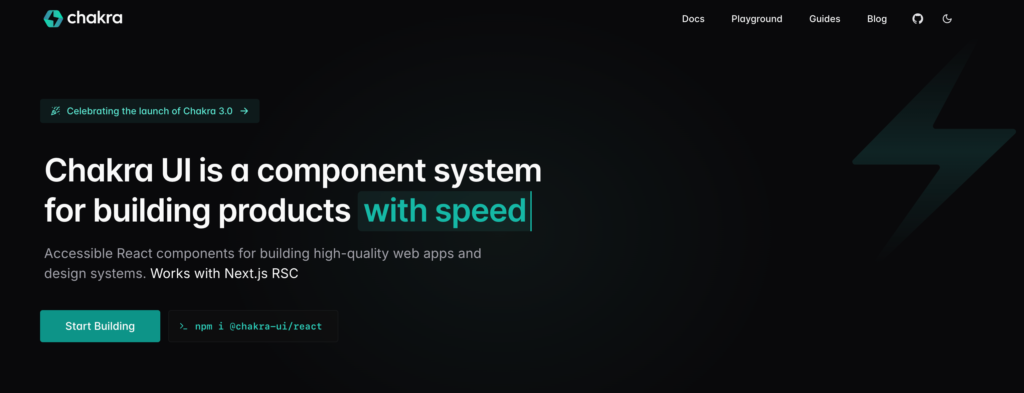
Chakra UI is a modern, accessible React-based component library developed by Segun Adebayo. It emphasizes flexibility, modularity, and customization for web development.
Chakra UI is perfect for developers working on React projects who need pre-designed, accessible, and responsive components. It’s particularly suited for those who prioritize accessibility and dark mode support.
Key Features
- Composable, pre-designed React components.
- Built-in dark mode and theme customization.
- Fully accessible components adhering to WAI-ARIA standards.
How does it compare with Tailwind CSS?
While Tailwind provides utility classes for building designs from scratch, Chakra UI offers ready-made components, reducing the need for repetitive code. Developers seeking a higher abstraction level will appreciate Chakra UI.
Download/Use
Install Chakra UI via npm with:
npm install @chakra-ui/reactVisit Chakra UI’s website for documentation.
2. Bulma
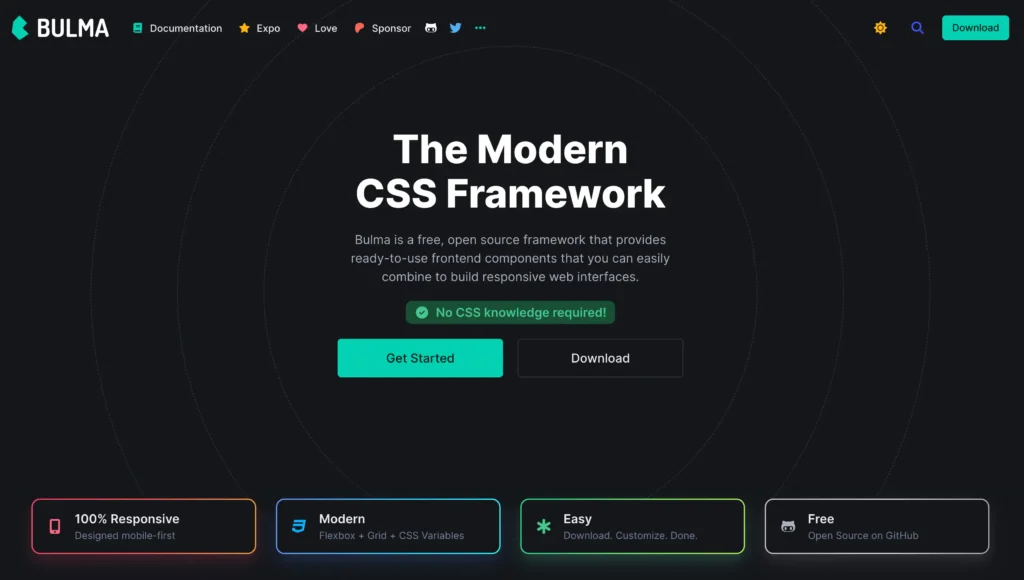
Bulma is a responsive CSS framework based on Flexbox, created by Jeremy Thomas. It provides an easy-to-use structure for building modern, responsive web pages.
Ideal for:
Ideal for developers who prefer a clean, pre-styled CSS framework without JavaScript dependencies. It’s great for teams working on lightweight projects.
Key Features
- Purely CSS-based with no reliance on JavaScript.
- Responsive grid system and utility classes.
- Extensive customization options with SASS variables.
How does it compare with Tailwind CSS?
Unlike Tailwind’s utility-first approach, Bulma leans toward a component-based structure. It’s more suited for developers who want predefined layouts and styles out of the box.
Download/Use
Download it via npm:
npm install bulmaCheck out the documentation at bulma.io.
3. UIkit
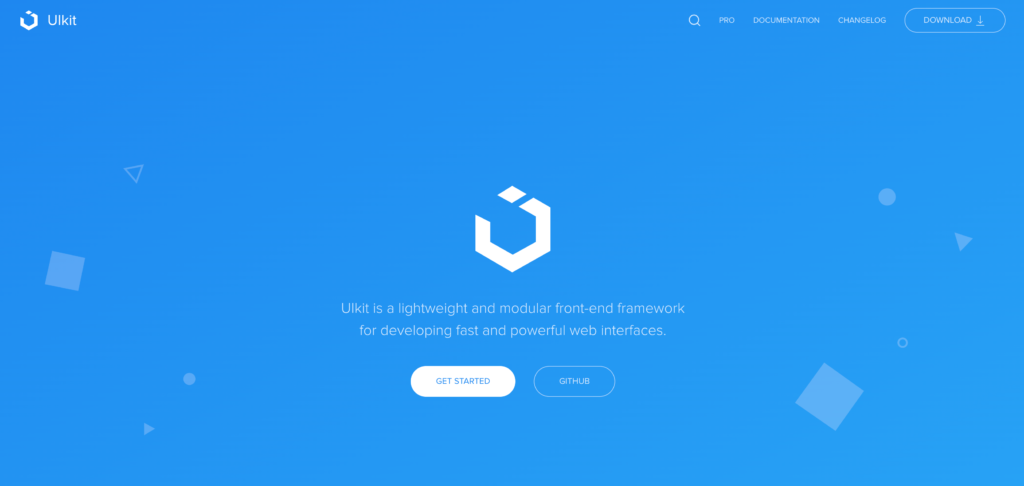
UIkit is a lightweight, modular front-end framework developed by YOOtheme. It offers a comprehensive set of HTML, CSS, and JavaScript components for modern web development.
Ideal for:
It’s ideal for developers looking for a balanced mix of flexibility and predefined styles. UIkit is particularly useful for quick prototyping and small to medium-sized projects.
Key Features
- Modular architecture for flexibility.
- Built-in animations and effects.
- Extensive documentation with pre-designed UI components.
How does it compare with Tailwind CSS?
UIkit provides a middle ground between utility-first frameworks like Tailwind and fully-styled libraries. It offers more built-in JavaScript-powered components than Tailwind.
Download/Use
Install it via npm:
npm install uikitLearn more at getuikit.com.
4. Skeleton
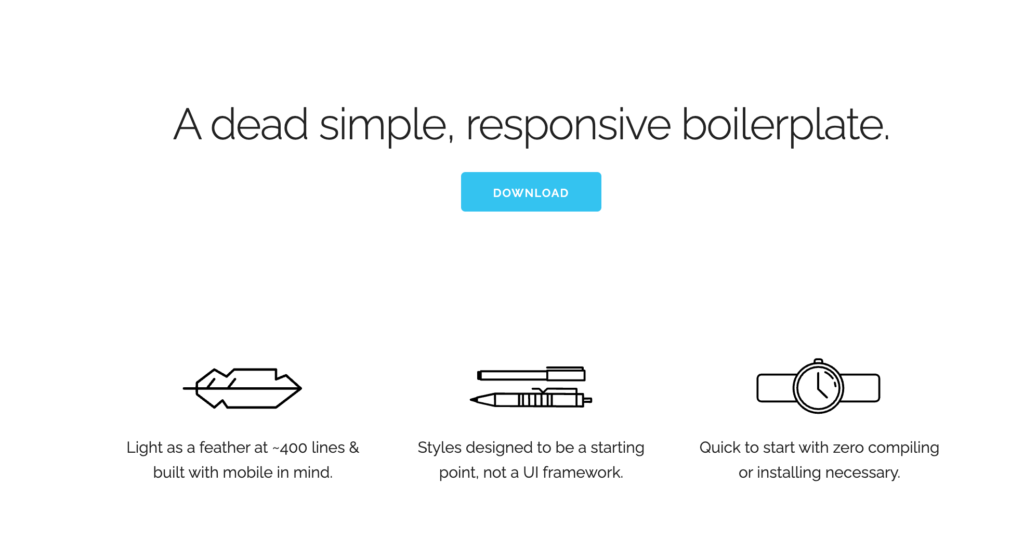
Skeleton is a minimalistic CSS boilerplate designed by Dave Gamache. It focuses on simplicity and responsiveness, providing a lightweight grid and basic styles.
Ideal for:
Skeleton is best for developers working on small-scale projects or prototypes where simplicity and speed are essential.
Key Features
- Lightweight (~400 lines of code).
- Simple grid system for responsive layouts.
- Minimal styling, easy to customize.
How does it compare with Tailwind CSS?
Skeleton is much simpler and less feature-rich than Tailwind, making it more suitable for smaller projects where minimal overhead is a priority.
Download/Use
Download it directly from getskeleton.com or use its GitHub repository.
5. Primer CSS
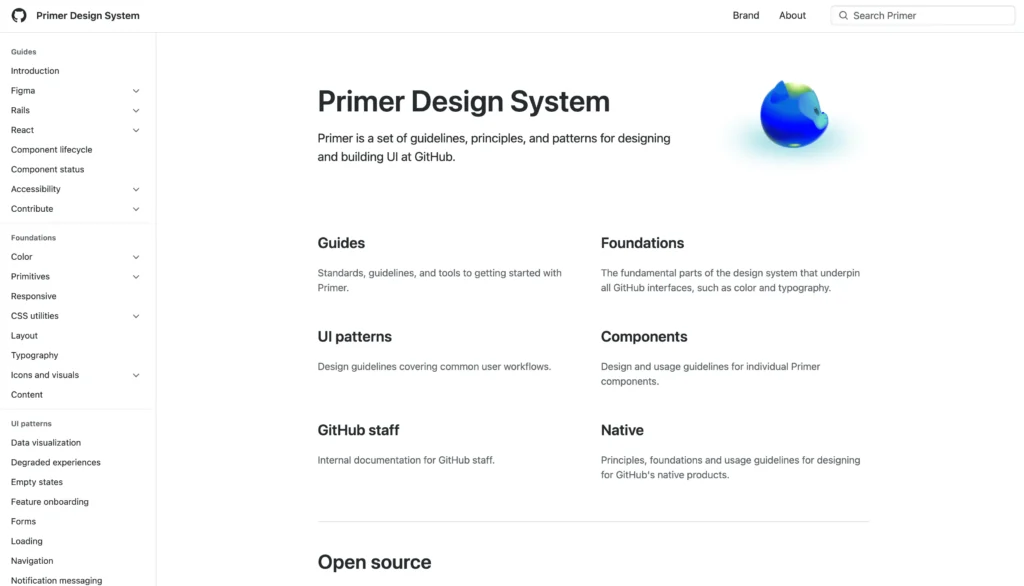
Primer CSS is GitHub’s design system, built for creating consistent and cohesive interfaces across their platform and beyond.
Ideal for:
Primer CSS is perfect for developers who want a highly organized and scalable design system, especially for large teams or projects.
Key Features
- GitHub’s design language, ensuring scalability.
- Comprehensive utilities for spacing, typography, and layout.
- Tailored for collaboration in large-scale projects.
How does it compare with Tailwind CSS?
Primer CSS provides utilities similar to Tailwind but emphasizes a design system for GitHub-style consistency. It’s less flexible but great for team cohesion.
Download/Use
Install Primer CSS via npm:
npm install @primer/cssVisit primer.style for details.
